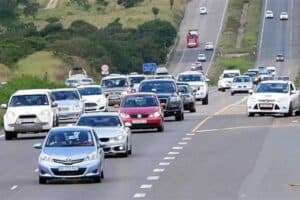The City of Joburg responded to the recent explosion with a R4 million investment in tunnel upgrades and new safety measures.

Executive Mayor Kabelo Gwamanda and City Manager Floyd Brink have detailed the City of Joburg’s action plan to deal with the aftermath of last month’s CBD explosion.
The explosion killed one person, injured several others, caused infrastructure damage and disrupted services in the area.
Joburg explosion update
Emphasising the need for transparency, Brink said the City of Joburg already spent R4 million on recovery after the recent inner-city explosion.
“Our rough estimate at this point currently sits around R178 million and that is based on work that has been done, but it’s based on preliminary designs.”
The cost of the explosion
Funds have been allocated to professional services, expert teams, as well as immediate relief measures in the aftermath of the incident.
Brink said the immediate safety of nearby residents was the first priority, followed by the restoration of services to the affected area.
The second phase is upgrading the tunnels to international standards. Constructed in 1935, the existing tunnels lacked provisions for modern needs.
He said the amount may increase based on the designs for the tunnels and future consultation with experts.
Upgrading the tunnels
A comprehensive upgrade, guided by international standards like NFPA 72 and South African norms for water and sewage, will now take place.
Brink said repair work to rehabilitate and reconstruct the area is currently estimated to stand at more than R100 million.
Once upgraded, the tunnels will be in line with current international codes to reduce the risk of severity for these types of explosions.
He said: “We will also introduce continuous gas detection, alarms, sensors and monitors for all staff working in the tunnels”.
Lessons learned from the Joburg explosion
Brink said the city learned several lessons, and now have a clear path on how to avoid future reoccurrences.
“As we move forward to upgrade these areas, we need ensure that we use technology.
The focus will specifically be on explosion prevention, with accidental combustible gas release in tunnels and/or cavities, he said.
Egoli Gas not to blame
“Was [the explosion] a mistake? It was a perfect storm.
“It takes three or four things to happen to create a perfect storm and that’s why we had this incident”.
He added: “Can we prevent it? Yes. I think in 1935 we didn’t know about [methane gas explosions].”
The dangers of methane gas was also discussed, with the city manager referring to similar incidents in Venezuela and New York, when six blocks were blown up in 1969.
He also confirmed that Egoli Gas was not responsible for the explosion.
Methane gas history
He explained that the “history of gas in Johannesburg” started in the 1800s, when gas was used to light street lamps.
“But they didn’t know how to build tunnels at that stage. We have all this experience now, we’re not smart but we learn from other people who experience the same”.
He said: “At this stage, the area is safe.”
Brink explained: “Methane is lighter than air so usually methane will go up. It travelled up all along the service tunnel from joan unknown source to the crest of the tunnel near the Von Brandis Street.”
Addressing the question of why residents didn’t see any flames, he said, at the low explosive level, “there’s a threshold of between 5 and 15%.”
“If it’s between 5 to 15% it will be an explosion, anything above 15% will then create a fire.”






